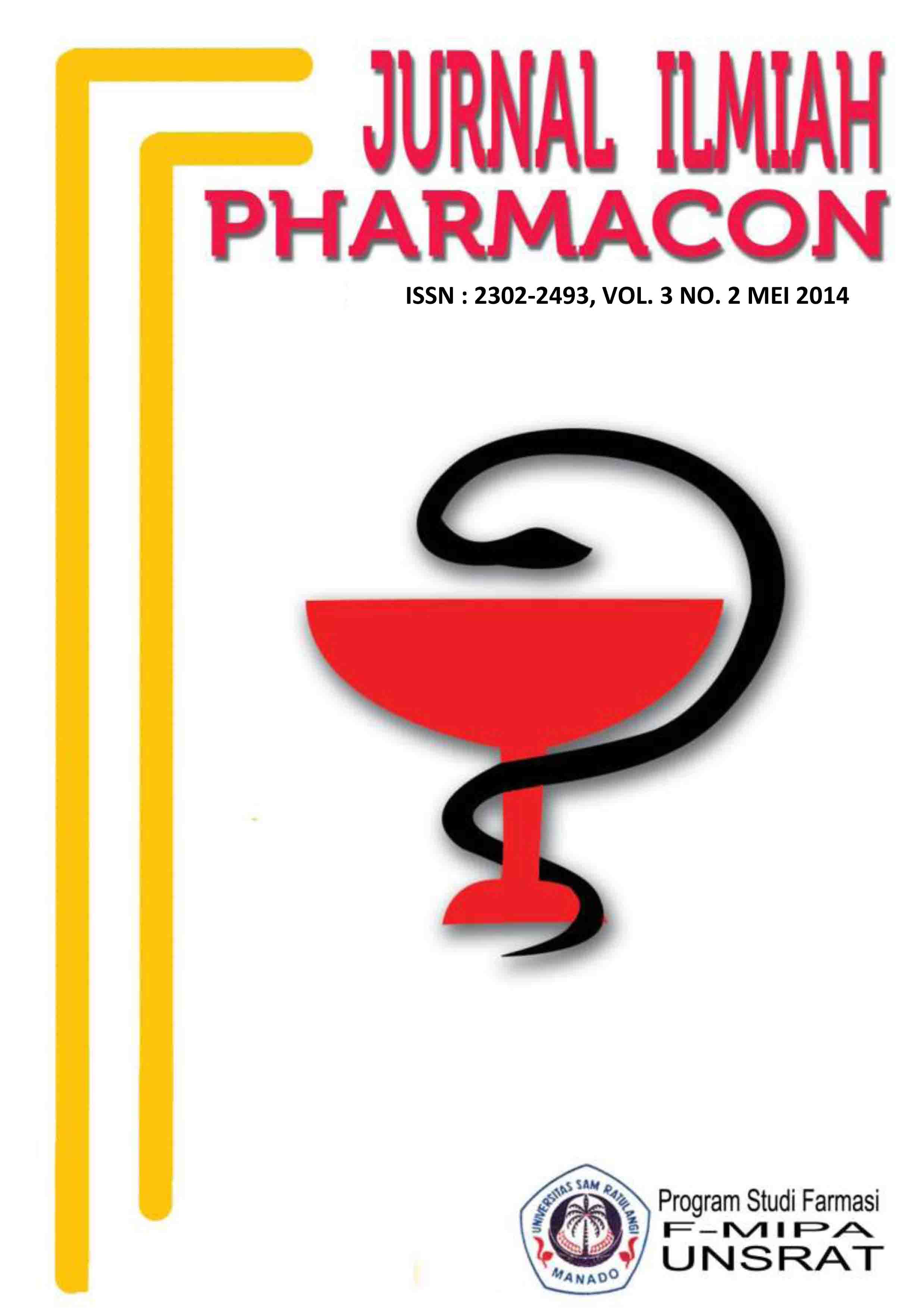AKTIVITAS ANTIOKSIDAN DAN TABIR SURYA PADA EKSTRAK KULIT BUAH PISANG GOROHO (Musa acuminate L.)
DOI:
https://doi.org/10.35799/pha.3.2014.4782Abstract
The purpose of this study is to determine the value of the antioxidant activity and the value of sunscreen on the skin extracts goroho banana (Musa acuminate L.) . Goroho banana skin cut into small pieces , then blended with distilled water and squeezed to remove the sap . Extraction method reflux for 2 hours using methanol , ethanol and acetone . Analysis of total phenolic content , flavonoids and tannins , the determination of the activity of free radical scavengers using DPPH (1,1 - diphenyl - 2 - picrylhidrazil) and rat tissue homogenates method , sunscreen effectiveness by determining the SPF value with spectrophotometric method . The results of this study indicate that goroho banana peel extract contains phenolic compounds , flavonoids and tannins . Ethanol extract has antioxidant activity values ​​are the highest of 75.71 % , 74.29 % followed by methanol extract and acetone extract 73.37 % . The results of the calculation of the highest SPF values ​​are also present in the ethanol extract followed by methanol and acetone .
Â
Key words : banana goroho , extraction , phenolics , flavonoids , tannins , antioxidants , SPF
Downloads
How to Cite
Issue
Section
License
Authors who publish with this journal agree to the following terms:
- Authors retain copyright and grant the journal right of first publication with the work simultaneously licensed under a Creative Commons Attribution-NonCommercial 4.0 International License that allows others to share the work with an acknowledgement of the work's authorship and initial publication in this journal.
- Authors are permitted and encouraged to post their work online (e.g., in institutional repositories or on their website) prior to and during the submission process, as it can lead to productive exchanges, as well as earlier and greater citation of published work (See The Effect of Open Access)










